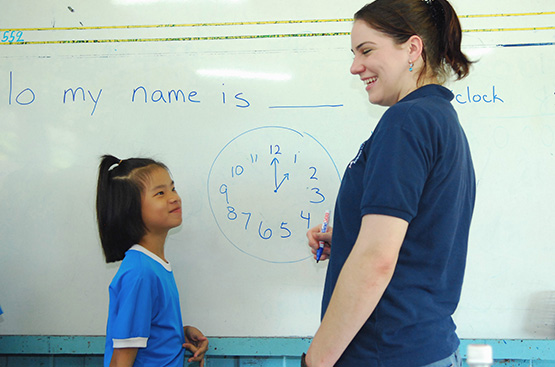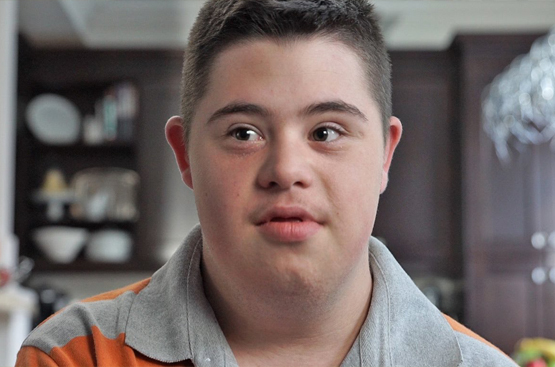What We Do

What is Applied Behaviour Analysis
(ABA)
Applied Behaviour Analysis is a field in psychology that has emerged over the last 40 years in which skills are broken into small teaching units and taught to children in a precisely prescribed manner using empirically-validated teaching techniques and systematic measurement of student gains.

What is Intensive Behaviour Intervention
(IBI)
Intensive Behaviour Intervention is one form of Applied Behaviour Analysis typically consisting of highly structured one-on-one teaching within a controlled environment.
What Is Autism Spectrum Disorder?

Autism Spectrum Disorder
Autism is also called “early infantile autism,” “childhood autism,” “Kanner's syndrome,” and “classical autism”. Technically it is “autistic disorder” and it is classified as a Pervasive Developmental Disorder in the Diagnostic and Statistical Manual (DSM-5) (2013).
Autism is a neurological disorder that affects communication, social interaction and behaviour. Diagnosis usually occurs within the first three years of life and is a lifelong disorder. Autism cannot be diagnosed through medical tests. A diagnosis is based on careful observation of child’s behaviour, level of communication, and social development. A diagnosis of autism is made by a regulated health professional, such as a pediatrician or psychologist.
Autism occurs among all ethnic, social, educational and income groups. In Canada approximately 1 in 66 children may have an Autism Spectrum Disorder, according to the Canadian Autism Intervention Research Network. Four times as many boys are affected by this disorder than girls.

Aspergers Syndrome
Asperger’s differs from Autistic Disorder in that impairment is primarily within the domain of social interactions. No significant delay in the development of other adaptive behaviour, cognition, and language.
Stereotypy or repetitive patterns of behavior or rituals must also be present. This disorder tends to be diagnosed later, usually after 3 years of age. This may be due to the characteristics being less noticeable, or the disorder has a later age onset.
There has not been much research on this however the most relevant work to date, are studies that included persons with autism characterized as "high functioning", persons referred specifically due to difficulties in social interaction, or persons labeled "with autistic features" or PDD NOS.

Pervasive Developmental Disorder (PDD)
The term Pervasive Developmental Disorders (PDD) describes a group of five disorders: Autistic Disorder, Rett’s Syndrome, Childhood Disintegrative Disorder, Asperger’s Disorder, Pervasive Developmental Disorders (Not Otherwise Specified) [PDD (NOS)].

Attention Deficit/Hyperactivity Disorder (ADHD)
According to the Diagnostic and Statistical Manual of Mental Disorders (DSM-IV) (a physicians manual for diagnosis), the symptoms of ADHD fall into the following categories: inattention, hyperactivity/impulsivity, and a combination of the two.
ADHD is a common neuro-behavioural disorder that has been related to the brain’s chemistry and anatomy. It is a persistent pattern of inattention and/or hyperactivity/impulsivity that occurs more frequently and more severely than is typically observed in comparable levels of development. Symptoms must occur for at least six months for a diagnosis. ADHD begins in childhood and while some children outgrow this, some continue to exhibit symptoms into adulthood.

Developmental & Academic Delays
A developmental delay occurs when a child has the delayed achievement of one or more of his/her developmental markers. Developmental milestones are determined by the average age at which children attain each skill. Statistically, about 3% of children will not meet the markers on time, but only about 15-20% of these children will have abnormal development. Developmental delays may affect your child's speech, language, fine motor skills, gross motor skills, life skills, and/or social skills. Consult with your Pediatrician and a formal screening test, such as the Denver II Developmental Screening Test should be completed. Testing for the cause of a global developmental delay may include a head MRI.
Children with developmental delays should be referred to an early childhood intervention program (for children under 3), so that an evaluation can be initiated, a treatment plan developed and start treatment right away.
Academic delays occur when a child falls behind his cohort, or a child is older than the age expected, for his/her level of learning. It is difficult once a delay has been identified, for a child to catch up as schools do not hold back students. Thus each year students fall farther and farther behind. The number of students that fall in this group with delays, increases year to year as each year more students are added to this group but none are removed. In elementary school, the number of students with academic delays increases yearly but actually decrease in secondary school. This is due to the students with academic delays in secondary school dropping off, transferring to a vocational training, or transferring to an adult general education program.

Down's Syndrome
Down’s syndrome is a disorder caused by an abnormality of the chromosomes. Normally a person has two copies of each chromosome, but a person with Down Syndrome has three copies of chromosome 21. The syndrome produces physical and mental characteristics which include a flattened small head, slanted eyes with extra skin folds at the corners of the eyes; small ears, nose and mouth, short stature, small hands and feet and some degree of mental disability.
